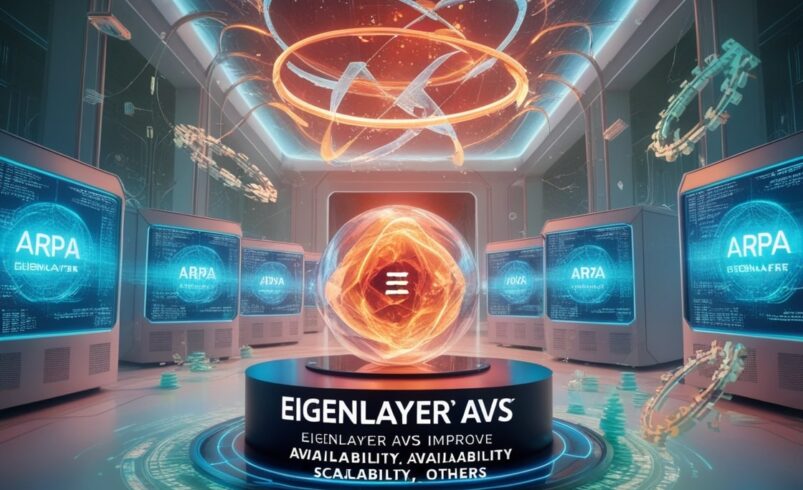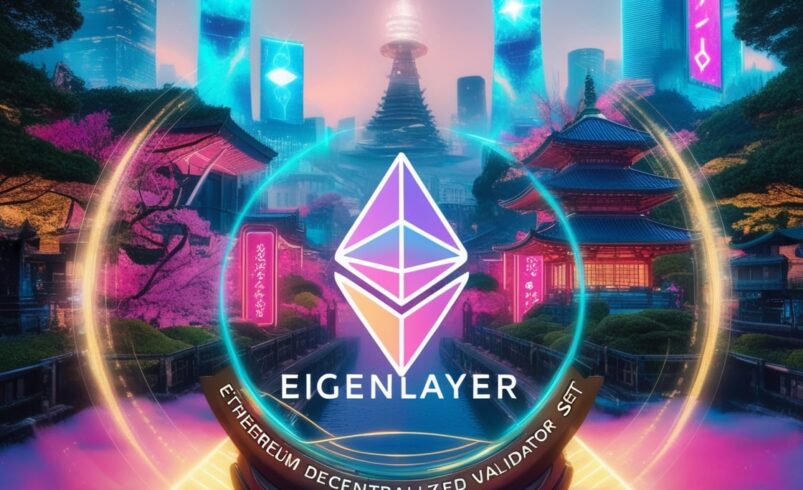ARPA Introduce EigenLayer AVS, Vows to Improve Availability, Scalability, Others

Advanced Research Projects Agency (ARPA) is launching its much anticipated EigenLayer Advanced Validation System (AVS), a move considered a major contribution to the blockchain and decentralized technology arena.
The company said its goal is to enhance it’s network’s security, availability, and scalability, which is the goal of this new system and represents a significant advancement for the project and the larger blockchain ecosystem. Earlier this week, the EigenLayer AVS was formally introduced, and the ARPA development team showcased the novel features and functionalities of the new system.
EigenLayer AVS is a blockchain technology solution that aims to solve some of the most critical issues and improve performance and dependability for ARPA’s expanding network. EigenLayer AVS is a complex network validation method using consensus and state-of-the-art cryptography techniques.
ARPA says it is working to build a more reliable and resilient network architecture that can accommodate a variety of decentralized applications and services by utilizing these cutting-edge technologies. EigenLayer AVS is unique in that it prioritizes security enhancement.
Industry Experts Commends EigenLayer AVS’s Abilities
EigenLayer AVS places a lot of emphasis on scalability as the ARPA network grows and draws in more users and applications. By adding these cutting-edge features to its network, ARPA raises the bar for industry standards regarding availability, security, and scalability.
EigenLayer AVS proves ARPA’s dedication to technology development and ongoing enhancement. Industry participants and the blockchain community have responded with overwhelming positivity. Analysts and experts have commended EigenLayer AVS’s potential impact on the network’s dependability and performance, as well as ARPA’s creative strategy.
Alisa Davidson from the MPost platform believes that this breakthrough represents a major turning point that will quicken the implementation of blockchain technology in various industries. In an official statement, the management of ARPA Network said that it had introduced the ARPA Network on EigenLayer with the help of various top operators with whom they partnered.
The statement says that the selected operators got over 2 million units of ETH worth $7 billion to retake over 80,000 stakers. ARPA Network secured an investment fund worth $6 million, with Laser Digital (by Nomura) and DeFiance Capital taking the funding process.
ARPA Considers Alliance With Other Blockchain Projects, EigenLayer Architecture Explained
John Stevens, a blockchain expert at CryptoInsights, stated, “The launch of EigenLayer AVS is a major achievement for ARPA and the blockchain industry as a whole.” John added that this discovery might significantly affect how blockchain technology develops in the future.”
ARPA is investigating alliances, cooperation with other blockchain projects and industry stakeholders, and other industry technical advancements. EigenLayer architecture comprises four major components: operators, AVSs, Actively Validated Services, and restakers consumers.
However, the Advanced Research Projects Agency Boneh–Lynn–Shacham (BLS)-Threshold Signature Scheme (TSS) Network works as an AVS, operating as a decentralized network that’s made up of many unique sections of nodes that’s responsible for securing the Boneh–Lynn–Shacham threshold signatures.
EigenLayer Resource Allocation explained, ARPA Staking And Ethereum Restaking Introduced
Consumers of AVS are expected to submit requests for its tasks to the AVSs. When the process is completed, the AVSs request services from operators that got restaked LST or ETH delegation directly from restakers and initiate a special node software to execute the tasks. This process is said to augment Ethereum’s shared security for a larger audience of developers.
ARPA Network uses Ethereum’s shared security through the EigenLayer’s Dual Staking system, introducing both the native ARPA staking and the Ethereum restaking. The increased amount of nodes is responsible for the increased fault-tolerance and augmented quality of service. This is responsible for a strong method of executing tasks.
The resource allocation optimized by EigenLayer allows operators to access many protocols concurrently, improving ARPA’s stability and scalability. This synergy allows the network to provide a bigger range of services with an improved user dependence.
The Randcast, EigenLayer, and ARPA alliance is believed to promote transparency in non-fungible token (NFT) operations, marketing activities, gaming, Decentralized Autonomous Organization (DAO) management, and blockchain operations using Randcast.
DISCLAIMER: It's important to know that the stories on this blog are not meant to serve as, nor should it be construed as, advice in legal, tax, investment, financial, or any other professional context. You should only invest an amount that you are prepared to lose, and it's advisable to consult with an independent financial expert if you're uncertain. For more information, kindly consult the terms of service and explore the assistance and support areas provided by the issuing or advertising entity. Our website is dedicated to accurate and unbiased reporting, but it's important to note that market circumstances may change rapidly. Additionally, please be aware that some (but not all) articles on our site are sponsored or paid posts.



![Royal Capital Review [Royalcapital.co] Full Broker Evaluation and Scam Test](https://www.cryptomasterymining.com/wp-content/uploads/2024/02/shutterstock_523402459-803x490.jpg)









